Last updated: September 12, 2023
Article
Podcast 132: Stories of Colorado Women Serving in WWII
Colorado Women during WWII
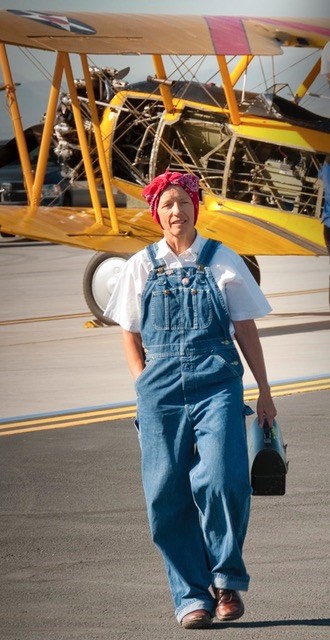
Photo courtesy of Gail Beaton
Gail Beaton: Gail Beaton.
Catherine Cooper: So Gail, could you tell us what led you to deep dive into the history of Colorado women during World War II?
Gail Beaton: Well, I've always been fascinated with World War II and especially the Rosie the Riveter character, and then when I was a high school teacher, I wanted to present the home front to the students in a manner that would be very interesting to them. So I developed a character called Gail Murphy, who's a bullet maker in Denver during the war. One of our facilities here used to be a Remington arms plant, so I gave this presentation for years to my students, and then it kind of exploded on me and I started giving it to all sorts of organizations throughout the state. And one time in 2014, I was giving it to a 1940s Forever group, and a woman came up afterwards and said she loved the presentation, but I didn't say anything about the army nurses, and I said, "You're right. I concentrated more on the home front and just barely mentioned women in the military."
Didn't even say anything about the army nurses. So I said, "Were you an army nurse?" And she's like, "Well, yes, I was in France and Germany during the war," so I said, "Could I please interview you?" And she agreed, and after several hours I thought, “these stories have to be told.” I mean, there was so much I had no idea about that it was time for somebody to find out and tell the stories. So that's kind of how I got into it.
Catherine Cooper: Could you explain how you chose to create the umbrella of “Colorado” for Colorado women?
Gail Beaton: I was interviewing and finding more stories, I realized that there were women here in Colorado that maybe were from Tennessee and never touched base in Colorado until after the war, and I thought, "Well, their stories are going to be missed. A Tennessee historian probably isn't going to track them down in Colorado, so I need to include their stories too." So I kind of expanded into those who also were in Colorado perhaps after the war.
Taking a Deep Dive into WWII History
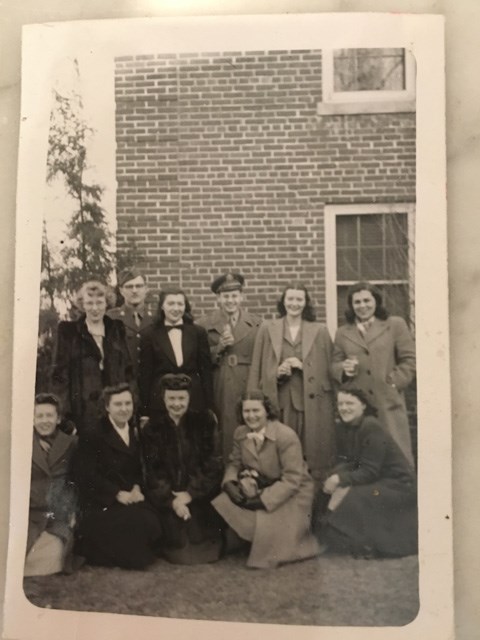
Photo Courtesy of Nancy Thompson Tipton
Gail Beaton: A lot of it was done through the internet. Fortunately, many things are now digitized. Of course, I went to museums and archival collections throughout the state. There's oral history collections at the Library of Congress. The University of North Carolina has a wonderful one on women veterans. Of course, I looked at, it felt like all the books on the women in the Air Force, service pilots or defense plants, all the general books that one would expect. And then I found women through a number of different sources. One woman I interviewed that I'd met through a presentation actually was talking to a woman at her hairdresser and found out the woman was a cryptanalyst during the war. So there were all sorts of little avenues that I was able to make.
Of course, I did tons of reading between transcripts and newspaper articles, obituaries, the census records, ancestry.com, diaries, letters, so a lot of different sources were used. I chose the vignettes trying to show the breadth and depth of Colorado experiences. So I tried to get vignettes that were women from the eastern plains and the Western Slope as well as the front range. I tried to include Anglo women, Latinas, African American women, even a woman from Eastern Europe. So that was one reason to include the different vignettes, especially at the beginning of the book. I actually was able, I think, to make sure that I got all my favorite stories in there. Some of them, I had to push a little hard with the editor and the reviewers, but I managed to hold my line on that.
Sharing the Stories
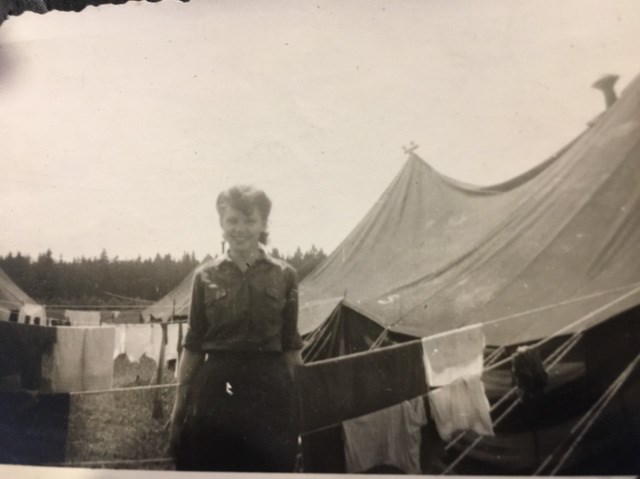
Photo Courtesy of Leila Allen Morrison
Gail Beaton: It just seemed logical to me to split the women into the three major areas of their contributions, women in the military, and then on the defense plants and then in volunteer activities. In doing the military, a number of people said, "Just combine the Army Nurse Corps and the Navy Nurse Corps because they're military nurse corps," but they actually had very different experiences during the war, and so I wanted to split them out.
And then also it just seemed logical to me, I guess maybe I was thinking that the military women were so unusual. Let's start off with them. Then I organized them according to when that particular branch was organized. So the Army and Navy Nurse Corps were before World War II and then followed by the WAACs, which were the first ones with the Army Corps in 1942. Then I guess I chose the second most unusual, and that would be the defense plants. And then the third, the women on the home front was kind of typically women's work or women's jobs doing volunteer activities, whatever war it is or peace time, that seems to be something that women are especially told in to do is volunteer work. I also wanted to highlight a woman in each chapter so that the beginning of every chapter would highlight a woman and her experiences in that particular branch or volunteer activity and things like that. Again, trying to show the diversity of Colorado women and their experiences.
Catherine Cooper: Who do you hope reads the book and what would you like them to take away from it?
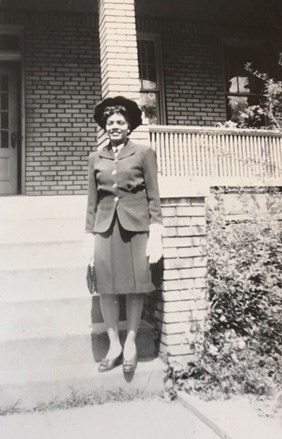
Photo Courtesy of Florence Hale Currin
One is that women can meet any challenge. They just need to be given the chance and they need to grab the chance or force the opportunity. And secondly, I'd like them to know that Americans can set aside our differences economically, politically, social differences, and actually come together and do some pretty great things and accomplish a lot. So I think those are kind of my two main goals in it, and it's why I continue to do my Rosie character and do book talks and things because I think it's important. These women meant so much to me that I think it's important for their stories to be told. Rosie has changed so much, and I have gotten so many new things. First started out to be a 30 minute, "This is what bullet makers do and other women are doing other things," but now I can talk about the all-girl orchestra from Denver that traveled through the United States.
I can talk about women that were crop dusters during the war because the men aren't being crop dusters in Oklahoma. So it's made me so proud to know just the great things that women have done, and so many of these women that I interviewed became friends. My army nurse that kind of sparked this whole book just passed away in July at 100 years and one week, so I saw her two or three times a year until COVID, of course. And so they were always so humble. “We just did it.” “It wasn't a big deal.” “I'm proud of what I did, but it was just they asked us to serve, we served.” “They asked us to not go to school for the first two weeks of our senior year to pick skins off of peaches. We did it. We went back to school.” So it's made me very appreciative.
It's made me very proud. I think one thing that also really hit me is how much these women went through. We're sitting here in 10 degrees weather today, and I think of these women working on airplanes outside fixing the bomb mechanism and women who are washing their hair in a helmet out in Europe in the coldest winter in 1944 and 45. It amazes me, and I have to stop and think, "This is just amazing that these women did these things and I know their male counterparts went through the same thing also." Just the physical deprivations that they also went through as well. We also don't think about women with PTSD and things of that nature until we look at our recent female veterans, but the women I talked to went through a lot of that also and found that they couldn't talk to people about their war experiences, especially in the military.
There are still more stories to hear
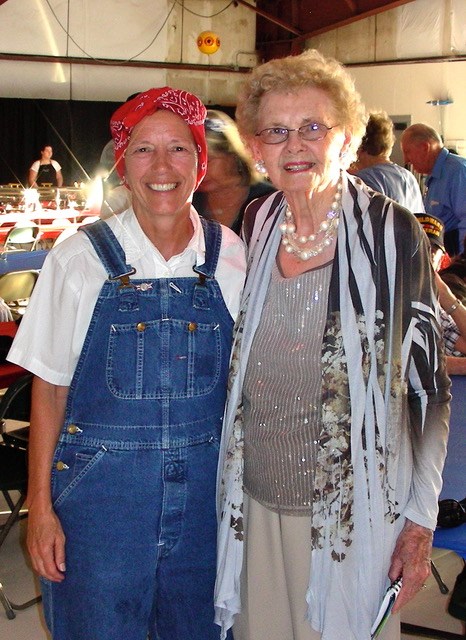
Photo courtesy of Gail Beaton
Gail Beaton: I think if they would just ask them to maybe bring out the scrapbooks photographs, that generation has them. They're not on their phones, and that's what these women did for me. They brought out their yearbooks and their photographs and their medals and things like that, and let me pour over them and ask them questions. I think if you just get them talking, a lot of them will talk and they'll open up. Ideally, it would be wonderful if one could videotape it, but even to just have it on a recording and have that voice as it goes forward, I think as we lose our relatives, oftentimes we think, "Oh, if I just could hear their voice again," and so the women that I interviewed, I made a transcription, which was painful [transcribing is tedious work] of their oral interview, as well as DVDs to give to their families or to hold for themselves, and I think that's really valuable.
I could submit them to the Library of Congress's Veteran Oral History project. One of the gentlemen that I met in all of this regularly does that. He works up in Northern Colorado and he has gone to interview all sorts of male and female veterans for any war, and then he submits the DVD to the Library of Congress, so that would be something to do. I know a couple of the universities here also will accept those. I haven't asked the libraries, but I can't imagine that they wouldn't at least keep them in their archival things too.
Catherine Cooper: Absolutely. Gail, thank you so much for sharing all of this with us.
Gail Beaton: You're welcome.
Read other Preservation Technology Podcast articles or learn more about the National Center for Preservation Technology and Training.
